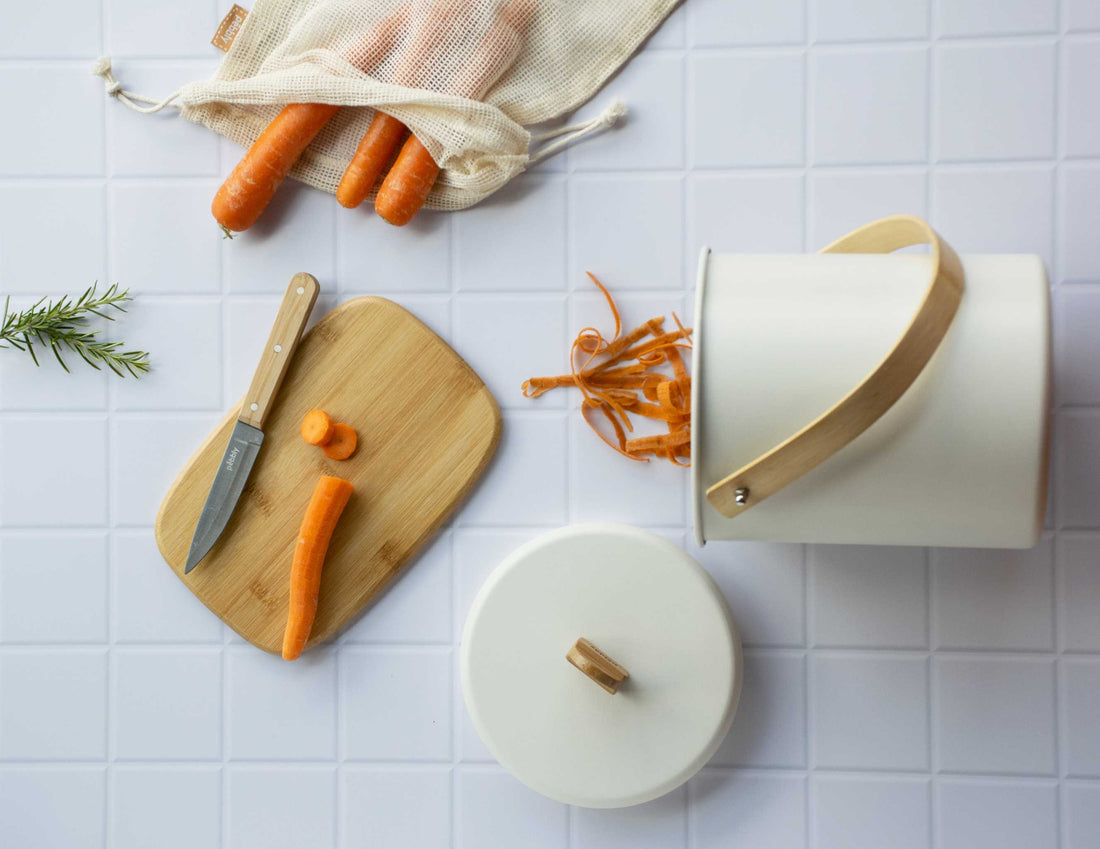
Different Types of Composting
We’ve all heard of composting. We know it’s a good thing for the soil and it helps gardens thrive. We also know it’s good for the environment at large, (even if we don’t quite understand allot the benefits). Actually, getting started, however, can feel like a challenge. Thankfully, there are a few different methods, all requiring varying levels of commitment and physical space. So, if you do want to reap the beautiful benefits of composting, this guide will help you understand the different types of composting, and which is best for you. Starting to composts easier than you think!

Which CompostingMethod is Right for You?
The first step is to choose the right composting method for you. You can start by asking yourself the following questions:
• How much space do I have to compost?
• What kinds of waste do I have to compost?
• How much organic waste do I produce?
• How much time can I (realistically) spend composting each week?
Once you have an idea of the above, then you can match the method to your lifestyle. There are 4types of composting to choose from, each with varying levels of space and time commitments.
Compost Collection/Drop-Off Service
The Process: You simply add a compost bin to your kitchen that you can keep near your trash can, or under the sink and place organic food waste in it. The waste is periodically picked up by a local company where it’s then turned into compost.
The Equipment: A good compost bin is essential to collect food scraps in the kitchen. This is a must-have, no matter which type of composting you choose. Pebbly’s compost bin is a plastic-free container made with sturdy and recyclable steel and a bamboo handle for a modern, minimalist look. The lid has a charcoal filter to neutralize odors.
The Pros: This method is easy and low maintenance since all youhave to do is put the scraps in the compost bin. You’re reducing what ends up in your trash bin and saving landfills from groundwater contamination.
The Cons: If the service doesn’t allow you to pick up the finished compost, then you (and your garden) don’t get the benefit of using compost as fertilizer.
Cold | Slow |Passive Composting
The Process: Mother nature takes her sweet time, breaking down organic matter at a natural pace. If you don’t have a large quantity of organic materials to compost, and you’re looking for minimal effort, then this is a good way to go.
The Equipment: A compost bin in the kitchen, plus a larger box or bin (3x3- 5x5 are ideal) where the composting can take place. Use a sturdy pair of gardening gloves when handling composting materials in the large bin.
The Pros: This method takes minimal effort on your part, and you don’t (necessarily) have to think about the ratios of material that needs to go in. You also don’t have to rotate the contents. Just bin it and forget it! Plus - the Pebbly Compost Bin beautifully fits into your kitchen. It’s modern, and chic,and comes in two colors to perfectly match any kitchen space!
The Cons: Ready-to-use compost can take a while to be ready to use. The lack of oxygen can also create a breeding ground for pathogens. If temperatures are regularly below 66 degrees Fahrenheit, you won’t have enough heat to kill them off. This anaerobic (oxygen-deprived) environment means things can get smelly unless you incorporate a bulking agent like straw, woodchips, dead leaves, or sawdust.

Hot | Fast |Active Composting
The Process: This requires the regular turning of the compost collection to generate heat. Heat accelerates the decomposition process. You have to think about the balance of high-nitrogen green waste (fruits and vegetable peels, eggshells, tea, and coffee grounds) to high-carbon brown waste (ash, paper products, dried leaves) for the mix to properly decompose and attract the right kind of microorganisms.
The Equipment: A good compost bin in the kitchen and a large, closed bin or rolling drum for composting. You’ll also need a pair of gloves and a thermometer to make sure the temperature stays between 130-140 degrees Fahrenheit.
The Pros: It’s much faster than cold composting, so you’ll end up with healthy fertilizer in about 2-4 weeks. For gardeners, hobbyists, and nature enthusiasts, it’s pretty exciting to watch nature work its magic.
The Cons: It’s the more time-consuming option since you have to turn the mix regularly, and you have to consider the green/brown material balance. Also requires more physical space for the composting container. If you have a small kitchen space or would like to prioritize harmonious design, this is probably not your best option. The Passive composting method would be a better alternative, because it would easily and beautifully fit on your kitchen countertop.
Worm-Based |Vermicomposting
The Process: Specific worms, most commonly Eisenia fetida, or red wigglers, are used to quickly compost organic matter. You’ll need about one pound of earthworms to get started, and you can expect them to consume 1/4 pound of food per day. When they’ve eaten everything, then you can add more, and the cycle repeats daily.
The Equipment: A good compost bin iin the kitchen, then your chosen variety of vermicomposting containers. These come in stacked units, or you make your own using a plastic storage bin with a lid. You’ll need a bit of soil, and some shredded newspaper or cardboard. For a helpful visual on how to layer your bin, check out this video to see vermicomposting in action.
The Pros: This method will result in exceptionally fertile compost. You also don’t need a lot of space for vermicomposting, so it’s perfect for people who live in apartments or small spaces. It’s an affordable way to start composting because the worms aren’t expensive, and you can easily DIY a vermicomposting bin.
The Cons: It’s more maintenance in terms of temperature and environmental control. To keep the worms alive and active, the ideal temperature needs to stay between 55-85 degrees Fahrenheit. Moisture levels should remain around 80%, and you want the pH to hover at around 7.0.

To recap, there are 4 different types of composting for you to choose from: composting collection/drop-off, passive composting, active composting, and vermicomposting. After figuring out which is best suited to your composting needs, composting at home will be a breeze! Shop the Pebbly compost bins to start reaping the rewards of composting


